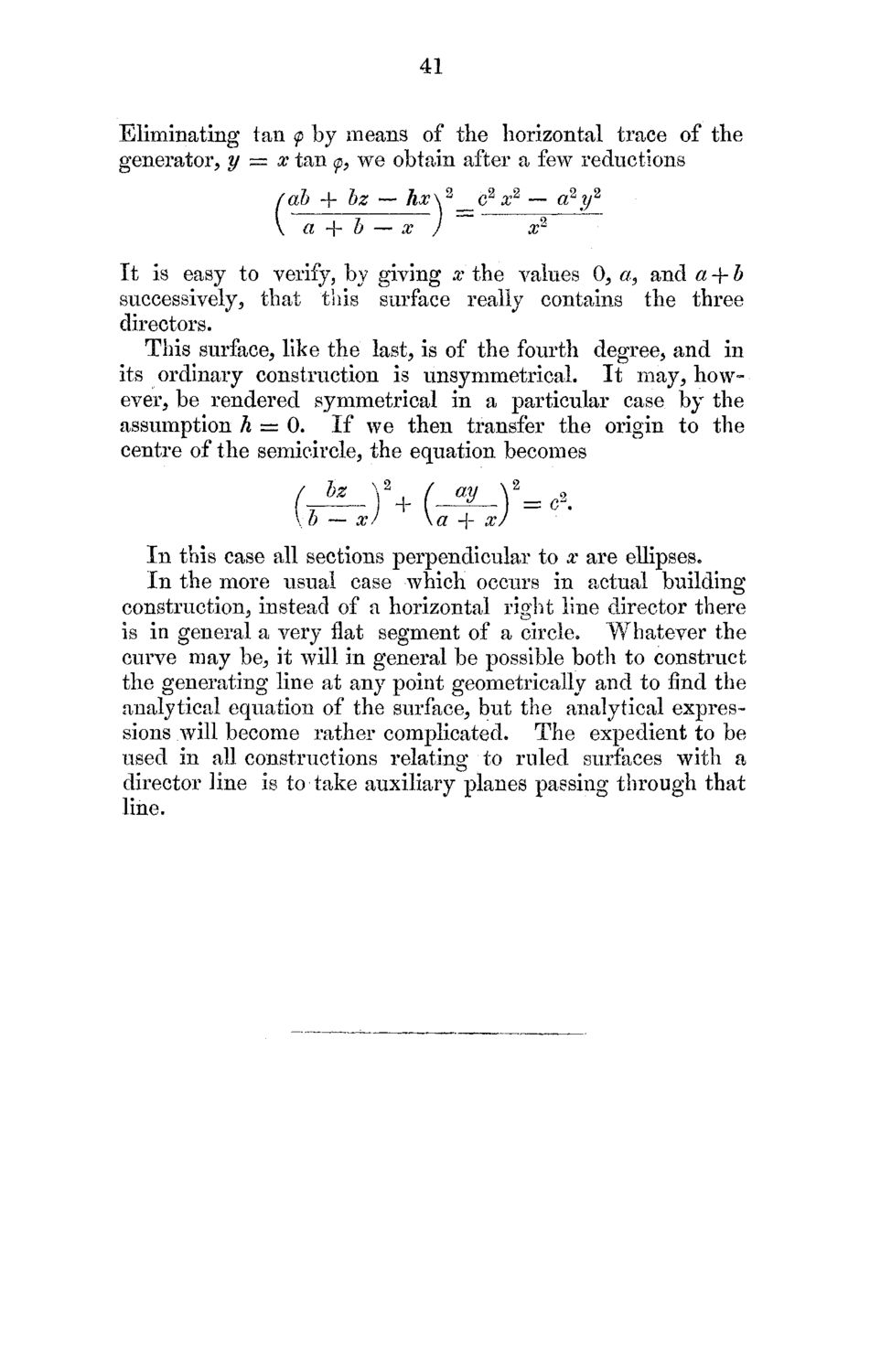| |
| |
Caption: Mathematical Models Catalog of a Collection of Models of Ruled Surfaces
This is a reduced-resolution page image for fast online browsing.

EXTRACTED TEXT FROM PAGE:
41 Eliminating tan < by means of the horizontal trace of the p generator, y = x tan <9 w e obtain after a few reductions p fab -f bz — A#\2__c2.r2 — a2y2 \ a -{- b — x ) ~~ x2 It is easy to verify, by giving x the values 0, a9 and a-\-b successively, that this surface really contains the three directors. This surface, like the last, is of the fourth degree, and in its ordinary construction is unsymmetrical. It m a y , however, be rendered symmetrical in a particular case by the assumption h = 0. If w e then transfer the origin to the centre of the semicircle, the equation becomes \b — x/ \a -f xJ In this case all sections perpendicular to x are ellipses. In the more usual case which occurs in actual building construction, instead of a horizontal right line director there is in general a very flat segment of a circle. Whatever the curve m a y be, it will in general be possible both to construct the generating line at any point geometrically and to find the analytical equation of the surface, but the analytical expressions will become rather complicated. T h e expedient to be used in all constructions relating to ruled surfaces with a director line is to take auxiliary planes passing through that line.
| |